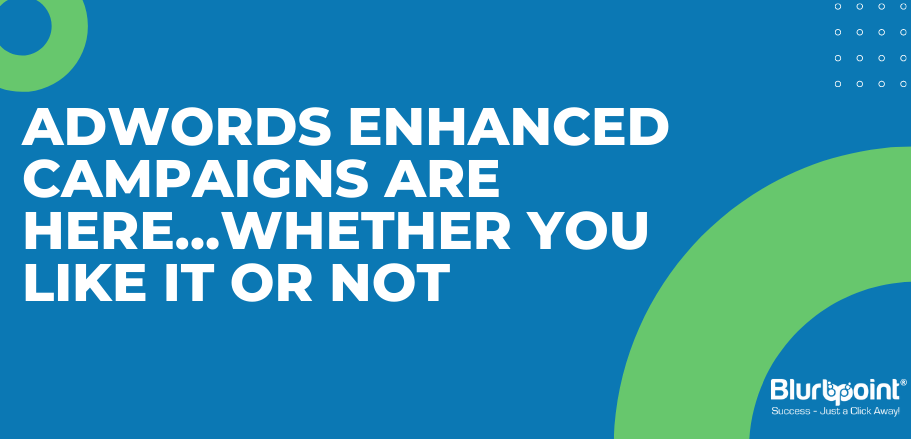GET A FREE CONSULTATION



Posted by Vivek Parikh
July 31, 2013
Over the past 6 months, Google has been preparing their AdWords customers for the “big switch” from legacy campaigns over to the new enhanced campaign format.
All you have to do is a quick search of the web in order to be presented with a vast range of differing opinions on the new enhanced campaigns. Options that were previously quite useful now have been eliminated which has caused a stir with online companies, agencies and others.
Previously, AdWords was used to allow complete separation between mobile and desktop targeting. No matter what your business is about from fashion to international recruitment, it did not have an accompanying mobile version nor was it responsive, you had the option to focus purely on desktop.
Now, Google has combined mobile, desktop and tablet ads, meaning the user must separate the placement of ads using the new mobile bid adjustment tool.
For example, It is now possible to increase/decrease your mobile bid adjustment to suit your preference of where the ads are displayed.
This feature has been unsettling for a number of AdWord users. The reason being, if you have an app available for download, and only want to target mobile users with your specific “download app” ad. Even if your bid adjustments are set to “increase mobile bids by 100%+”, Google does not guarantee that some ads will not appear on desktop resulting in wasted impressions which could affect Quality Score in the long run.
The same example can be used if you don’t wish to target mobile users at all. Even if mobile bids are decreased by 100%, some ads may still appear on mobile.
Many theories have been produced as to why Google has made these changes but the most relevant one I have heard to date is:
Traditionally, the average CPC on mobile was considerably lower than that of the desktop. By implementing the new bid adjuster, Google is now involving every AdWord account in the mobile bid market which will effectively drive the CPC prices for mobile up, resulting in yes, more revenue for Google AdWords.
Also, it’s no secret that mobile is on a fast track to overtake desktop for online searches and purchases. Google has always stated that they want to deliver the best, most relevant search results for the user. In doing so, it is clear to see that if you have a site that is not mobile responsive, the chances are that you will be playing catch up for the next few years.
AdWords aside, it is highly recommended that your site is mobile and tablet friendly. If you are currently in the process of setting up a site, it is always suggestible developing a site for mobile and tablet, which looks/functions well on desktop… and not the other way around.
Although most of the responses to the change were negative, there have been many good reactions. In those cases, businesses have managed to benefit from using local features and mobile targeting strategies. According to a report recently released by Google, businesses like Pizza Hut, Autobytel and Miller`s Bakery have increased ROI by reaching out to more customers.
It is essential to pay attention to other updates like Google Maps Ads for using location extensions, flexible bidding options and others, to get the most of them and adapt your strategy promptly.
Besides the new features of Google AdWords, it has never been easy to succeed with only one single step. It involved a lot of monitoring, adjusting and experimenting for achieving the best results possible. From this point of view, enhanced campaigns can be either full of opportunities or harmful for your campaigns but always burdened with change.